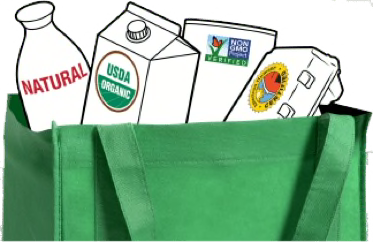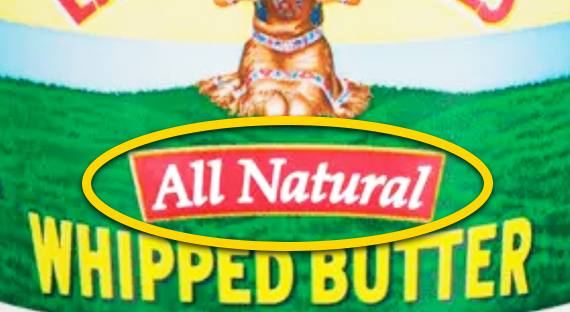One of the biggest misconceptions among many consumers is that foods labeled "natural" are grown or produced without harmful synthetic pesticides. The fruits, vegetables, grains, nuts, and other ingredients used to make "natural" products can be treated with the same pesticides used in conventional farming, as can the corn, soy, and other crops fed to livestock or poultry.
"Natural" may be used on meat, dairy, and eggs from animals treated with drugs to prevent disease, promote growth, or increase milk production (in dairy cattle). For example, antibiotics can be used for disease prevention (which is linked to antibiotic resistance), and "natural" beef may come from cattle raised with steroid hormones to promote faster growth. (The Department of Agriculture bans the use of steroid hormones in pork and poultry.)
A "natural" claim doesn't address how the animals were raised or what they were fed. For beef cattle and dairy cows, "natural" doesn't mean that animals grazed in a pasture and/or were fed their natural diet of grass and grass-based forage. For animals raised for meat, dairy, or eggs, it doesn't mean that animal byproducts such as slaughterhouse waste or processed animal manure products were prohibited in the animal's feed.
The standards for the term "natural" don't address how animals are raised, and foods with that label don't necessarily come from animals that were given adequate space or access to the outdoors. Physical alterations, such as trimming chickens' beaks, docking pigs' tails, and branding cattle, are permitted in conventional agriculture, and a "natural" claim doesn't mean these practices were prohibited.
Foods labeled "natural" can contain genetically modified (or engineered) corn, soy, sugar, canola oil, and other ingredients. "Natural" meat and poultry can come from animals that were fed genetically modified grain or forage.
Meat, poultry, and egg products can be called "natural" if they are minimally processed and contain no added artificial ingredients. The Department of Agriculture requires a one-time review of an application by the producer but does not require any additional verification. For other foods, the term has no clear meaning and is not verified by any government agency.

Consumer Reports takes a detailed look at the requirements, definitions, standards, and verification procedures behind food labeling seals and claims, and distills this information into CR ratings. Our goal is to inform and empower consumers so they can act to create demand for a healthier, safer food system.

























